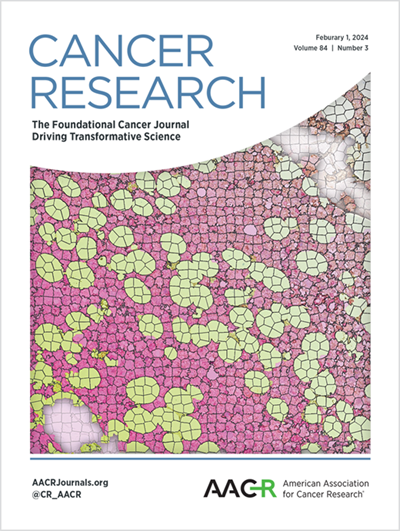Genomic Analysis Reveals Racial and Age-Related Differences in the Somatic Landscape of Breast Cancer and the Association with Socioeconomic Factors
IF 12.5
1区 医学
Q1 ONCOLOGY
引用次数: 0
Abstract
Cancer genomics consortia have identified somatic drivers of breast cancer subtypes. However, these studies have predominantly included older, non-Black women, and the related socioeconomic status (SES) data is limited. Increased representation and depth of social data are crucial for understanding how health inequity is intertwined with somatic landscapes. Here, we conducted targeted sequencing on primary tumors from the Carolina Breast Cancer Study (N = 357; 52% Black, 47% <50) and compared the results to The Cancer Genome Atlas (N = 948; 18% Black, 27% <50). Race (Black vs. non-Black), age, and SES were evaluated in association with mutations, copy number alterations, and aneuploidy using generalized linear models. Pathway dysfunction was also assessed by aggregating mutation and copy number alterations. Adjusting for age, Black participants (N =350) were significantly more likely to have TP53 and FAT1 mutations and less likely to have PIK3CA, CDH1, DDR2, and GATA3 mutations than non-Black participants. Younger participants had more GATA3 alterations and fewer KMT2C, PTEN, MAP3K1 and CDH1 alterations. Black participants had significant enrichment for MYC (8q) and PIK3CA (3q26) amplifications and higher total aneuploidy, but age was not associated with copy number variation. SES was associated with different patterns of alteration in Black versus non-Black women. Overall, Black participants showed modest differences in TP53, PIK3CA, and other alterations that further varied by SES. Race is a social construct, and varying distributions of etiologic factors across social strata may predispose Black, young, and low SES women to cancer subtypes characterized by these alterations.求助全文
约1分钟内获得全文
求助全文
来源期刊

Cancer research
医学-肿瘤学
CiteScore
16.10
自引率
0.90%
发文量
7677
审稿时长
2.5 months
期刊介绍:
Cancer Research, published by the American Association for Cancer Research (AACR), is a journal that focuses on impactful original studies, reviews, and opinion pieces relevant to the broad cancer research community. Manuscripts that present conceptual or technological advances leading to insights into cancer biology are particularly sought after. The journal also places emphasis on convergence science, which involves bridging multiple distinct areas of cancer research.
With primary subsections including Cancer Biology, Cancer Immunology, Cancer Metabolism and Molecular Mechanisms, Translational Cancer Biology, Cancer Landscapes, and Convergence Science, Cancer Research has a comprehensive scope. It is published twice a month and has one volume per year, with a print ISSN of 0008-5472 and an online ISSN of 1538-7445.
Cancer Research is abstracted and/or indexed in various databases and platforms, including BIOSIS Previews (R) Database, MEDLINE, Current Contents/Life Sciences, Current Contents/Clinical Medicine, Science Citation Index, Scopus, and Web of Science.
 求助内容:
求助内容: 应助结果提醒方式:
应助结果提醒方式:


